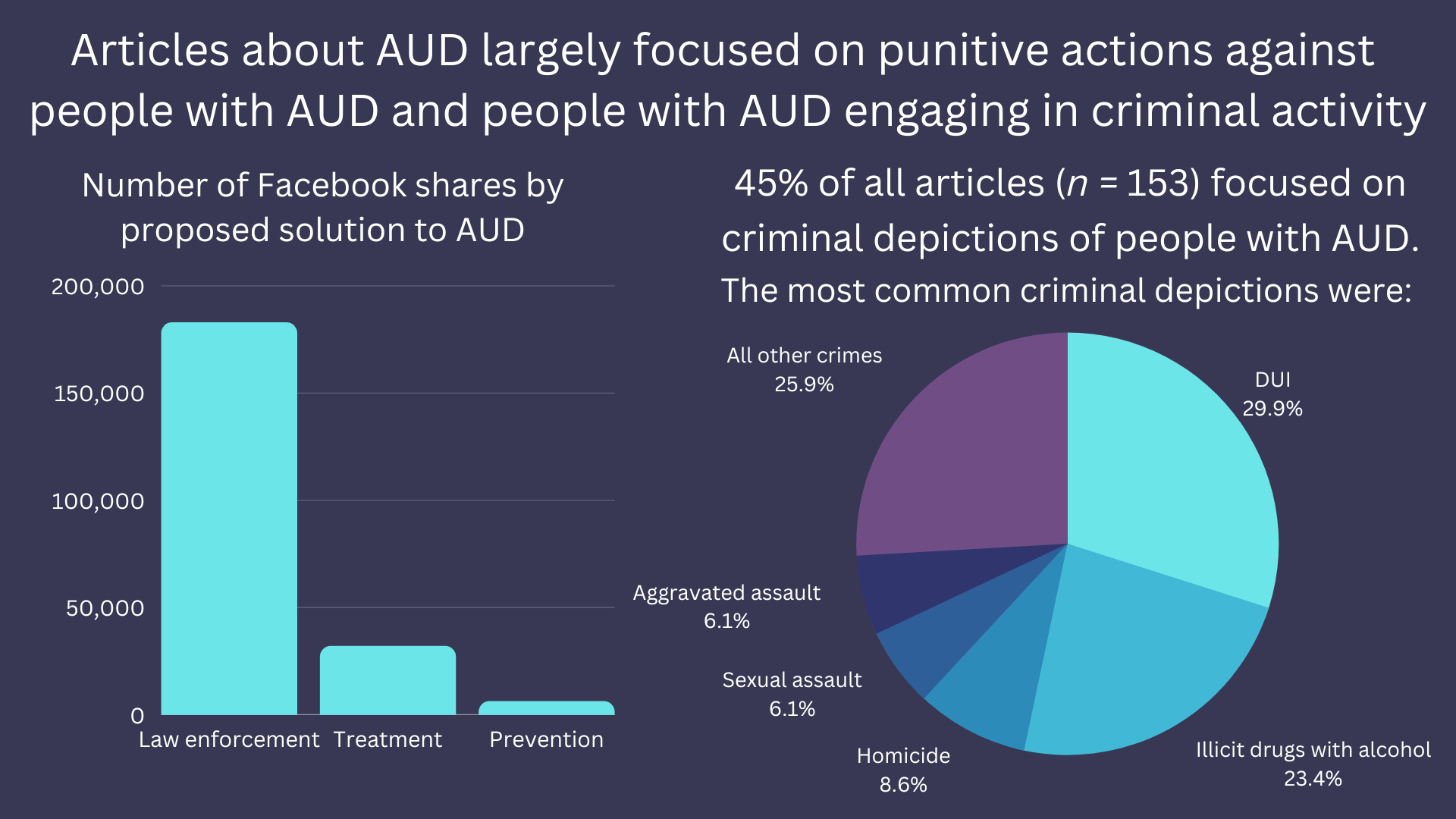Over 14 million people in the United States have alcohol use disorder (AUD). The effects of long-term alcohol abuse can have devastating consequences on health and wellbeing. As Matthew Perry discusses in his recent memoir, he spent half his life and roughly $9 million seeking treatment for his addiction. Perry wrote his memoir, in part, to combat the stigma that still surrounds addiction. Indeed, stigma related to AUD presents a major barrier for people trying to seek treatment as they could become victims of discrimination. Changing the language used to describe addictive disorders is one strategy that we can use to help reduce stigma. This week, The DRAM reviews a study by Alex Russell and colleagues that examined how U.S. news articles discuss individuals with AUD and propose different solutions to AUD.
What were the research questions?
How do online U.S. newspapers discuss individuals with AUD? What are proposed solutions to AUD? How do readers engage with these articles?
What did the researchers do?
The authors conducted a content analysis of online news articles from major news outlets in the U.S. that reported on AUD. Initially, the researchers found a total of 45,980 articles containing the word “alcohol.” They then filtered out irrelevant articles and articles that did not discuss hazardous alcohol use, AUD, or recovery from AUD. After exclusions, the authors were left with a working sample of 339 news articles. The researchers coded a 30% subsample to establish inter-rater reliability.
What did they find?
The authors content analyzed a total of 339 news articles that mentioned AUD. Most (n = 244, 72%) focused on accounts of individuals with AUD, rather than on AUD in general. Of the articles focusing on individual accounts, 153 (62.7%) depicted individuals as being involved in criminal or illegal activity. Half as many (31.1%) focused on treatment. About 60% of articles posed a solution to alcohol use disorder, typically, law enforcement options (63.9%), followed by treatment (40.1%) and prevention (15.8%) options. Articles posing punitive policies (i.e., arrests, prosecutions) as a solution to AUD were shared on Facebook (182,799) and viewed (28,333,845) significantly more times compared to articles discussing policies related to treatment and recovery (31,943 shares; 4,951,165 views) or prevention (6,229 shares; 965,495 views) as solutions to AUD.
Figure. Number of Facebook shares news articles received by their proposed solution to AUD and the most common criminal depictions of people with AUD found within the news articles. Adapted from Russell et al. (2022). Click image to enlarge.
Why do these findings matter?
News articles have the potential to sway public opinion and policy about social issues. The results of the study showed that news articles may be working to perpetuate stigma toward people with AUD by favoring legal action as a proposed solution to AUD and by commonly focusing on people with AUD engaging in criminal behavior. Stigma can lead to a reduction in resources allocated for treatment services and people with AUD developing reluctance to seek treatment due to fear of discrimination.
Every study has limitations. What are the limitations in this study?
The news articles content analyzed in this study were collected from a single year, which means that the researchers could not examine trends in news coverage related to AUD over time. The article was also limited in that the researchers were only focused on news coverage in the U.S., which reduced their ability to identify international trends.
For more information:
The National Institute on Alcohol Abuse and Alcoholism has tips and resources for people struggling with problem drinking. For additional drinking self-help tools, please visit our Addiction Resources page.
— Seth McCullock, PhD
What do you think? Please use the comment link below to provide feedback on this article.





